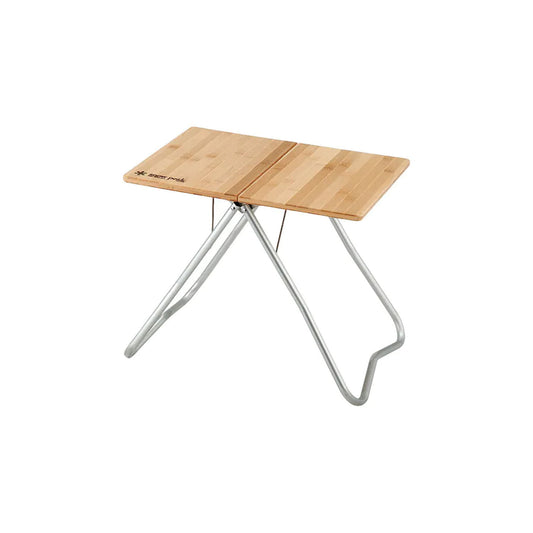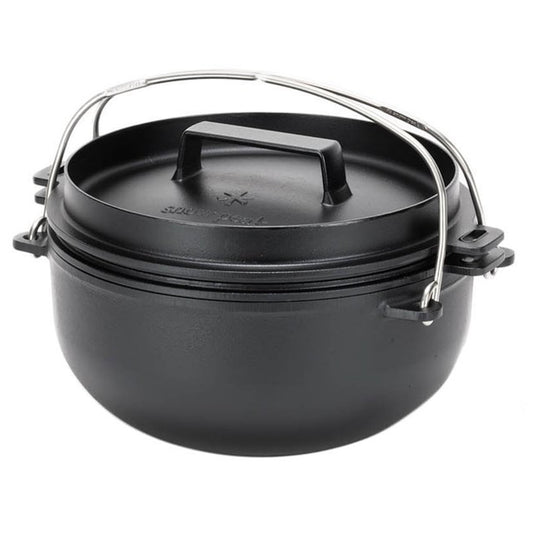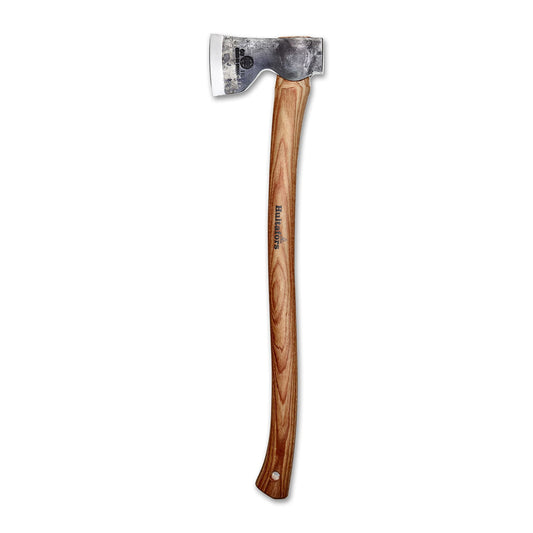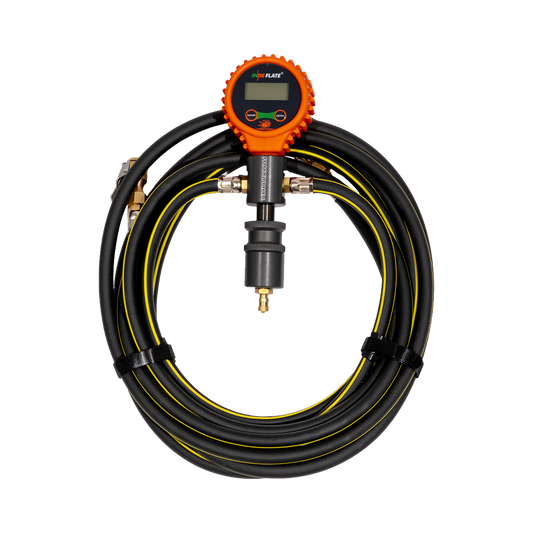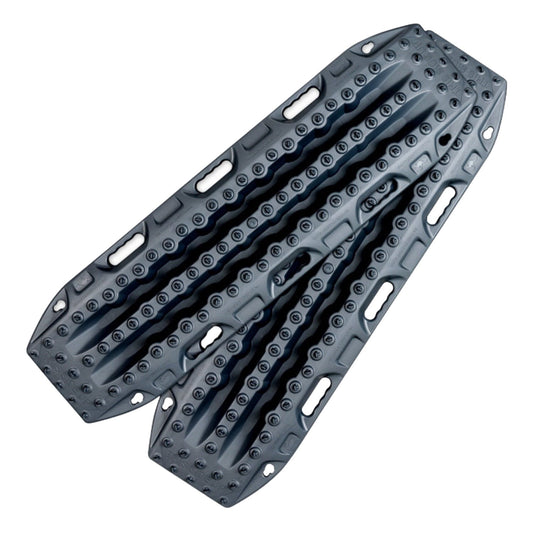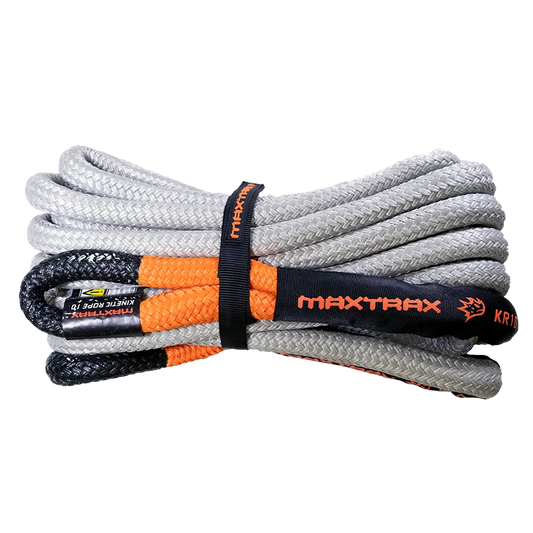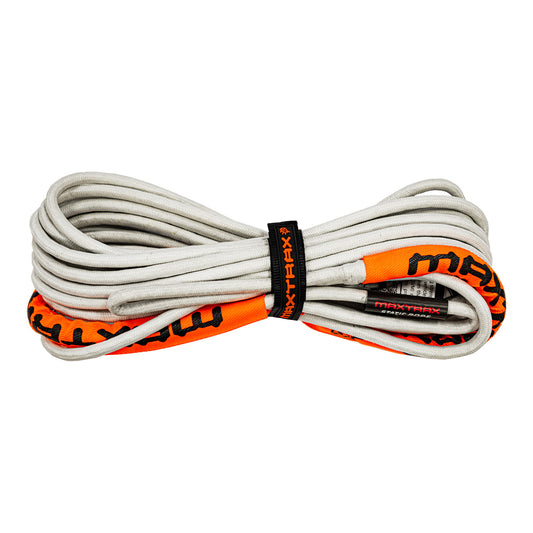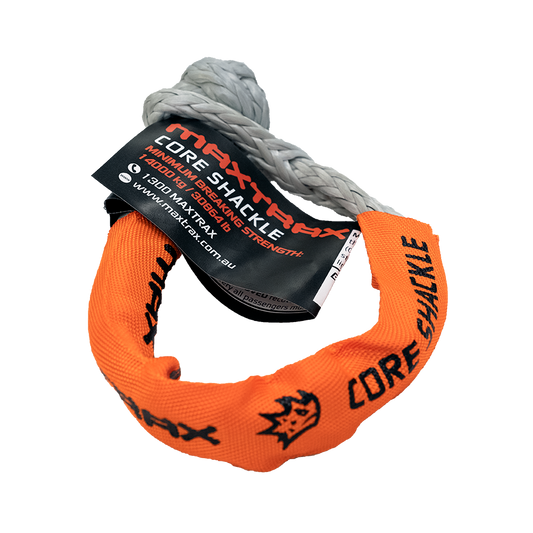
So, what is the MAXTRAX Trailer Skid?
The MAXTRAX Trailer Skid attaches to the jockey wheel or hitch of a trailer to allow easier recovery or manoeuvring when disconnected from the tow vehicle.
Instead of the trailer ploughing into the soft sand, mud or snow, the hitch can float or skid along with minimal drag.
It’s a similar concept to the ski attachments light aircraft add to the front wheels if landing in deep snow.
Using the Trailer Skid with a jockey wheel
To use the MAXTRAX Trailer Skid with the jockey wheel it’s a simple matter of positioning the wheel in the groove in the rear of the skid and strapping the wheel in position with the stretchy strap.


To stop the chains and electrical cables and connections dragging and potentially getting damaged we strapped them up out of the way on the drawbar with a tie-down strap.

With the trailer disconnected, it is much easier to recover the tow vehicle. From firmer, it is then easier to drag or winch the trailer through the soft stuff.

To spread the load and keep the pull central we connected using two MAXTRAX Core Shackles.

At the Cruiser end, we replaced the trailer hitch with our Hitch 50 and connected the recovery rope with a Fuse Shackle to place the weakest link in the safest location.

Once underway, the Terra Trek dragged effortlessly behind the Cruiser on the skid, and the skid stayed steady and front up with no problems.

The only slight issue we had was with the jockey wheel. We wound it as low as we could to increase strength, but even still, there seemed to be a fair force exerted when pulling. This particular jockey wheel is designed for quick removal during transit. Heavy-duty fixed jockey wheels should have no issues, but using the skid without the jockey wheel we found to be the more bulletproof option.
Using the Trailer Skid without a jockey wheel
To save our backs, we used a bottle jack to lower the trailer hitch down directly onto the skid. Later, we reversed the process to get the camper back onto the vehicle.

The Skid comes with a black rubber pad that inserts in the wheel cavity for when the hitch is being placed directly on the skid.


With the hitch in place, the same stretchy rubber strap is used to secure it, but this time latching it into the side slots.

We were soon hooked up, ready to go. Straight pulls with this setup were almost too easy. Next up, we wanted to see how the MAXTRAX Trailer Skid worked on tight turns like a narrow beach or track.


In the below image you can see the wheel marks and scrape marks from the skid as the the trailer almost pivots on the spot. While the vehicle is pulling with a 3m rope from the front we could have repositioned it or used our winch to pull the trailer around from behind with quite a sharp angle if the conditions of the recovery had less room to play with.
What surprised us the most was how well the MAXTRAX Trailer Skid worked when it was essentially moving sideways. The high sides that we initially thought was a bit bulky for storage came into their own. A little sand spilled into the skid, but it stayed steady and kept sliding.

Recovering boats
While we didn’t get the chance to test out a boat recovery, we spent some time discussing the scenario.
Launching a boat is typically more straightforward, with the weight of the boat off the trailer while the 4×4 exits the water. But when pulling the boat out in soft sand, we see the MAXTRAX Trailer Skid working well. The trailer can be pushed as deep as it needs to be to load the boat, and the tow vehicle can be positioned on firmer sand. The tow vehicle should more easily be able to drag the boat up through the boggy sand and then connect on better ground.
Specs
Like MAXTRAX recovery boards, the MAXTRAX Trailer Skid is Australian made from UV-stabilised, flexible, engineer-grade reinforced nylon.
The MAXTRAX Trailer Skid weighs 3.8kg and measures 800mm long, 400mm wide and 230mm high.


Summary
Tyre deflation, MAXTRAX recovery boards and standard equipment like winches and recovery ropes will get you out of most pickles. However, once a trailer is disconnected, the challenge gets exponentially more difficult. I see the Trailer Skid as a great tool to make this scenario easy.
For those with rugged campers, that like to tow everywhere, it’s likely a handy addition to your recovery kit. Hopefully, you won’t use it often, but when you do, it will no doubt earn its space on your packing list.
Beach recovering boats can be challenging. I can see those that do this reaching for the Trailer Skid in more tricky conditions.




